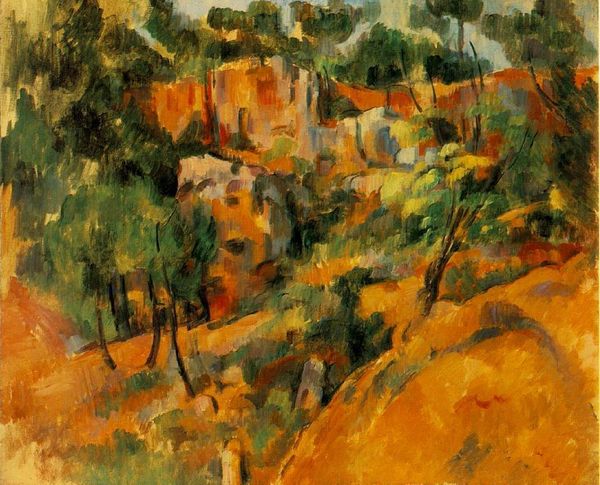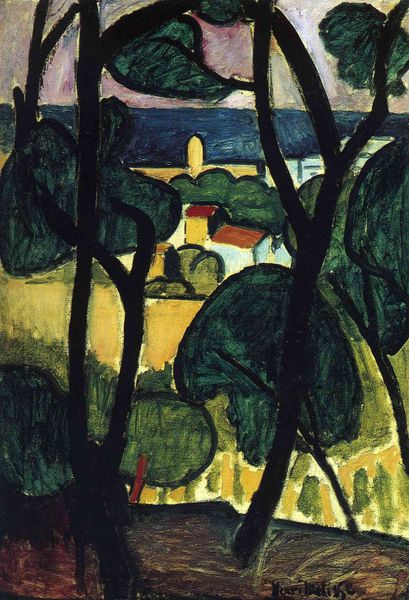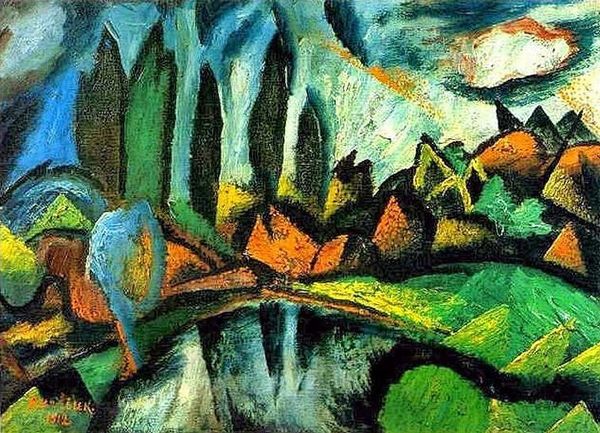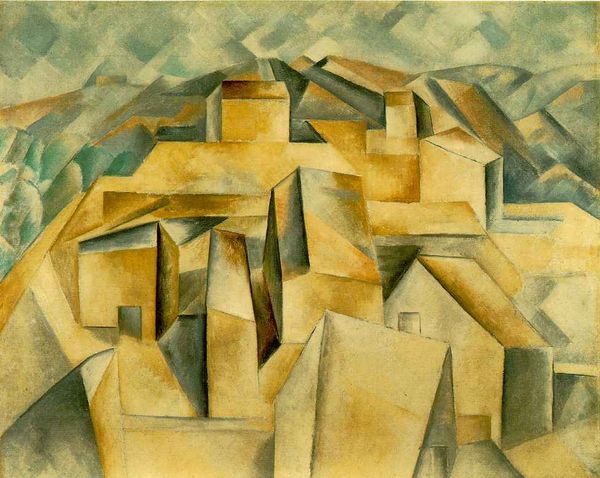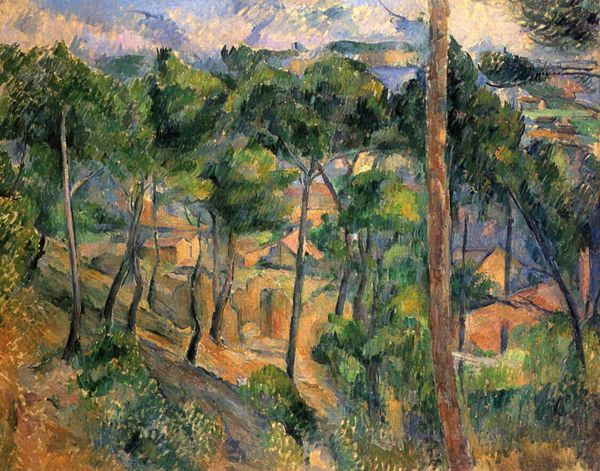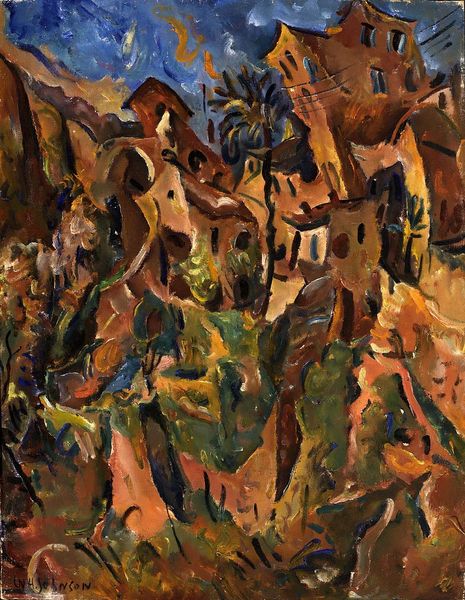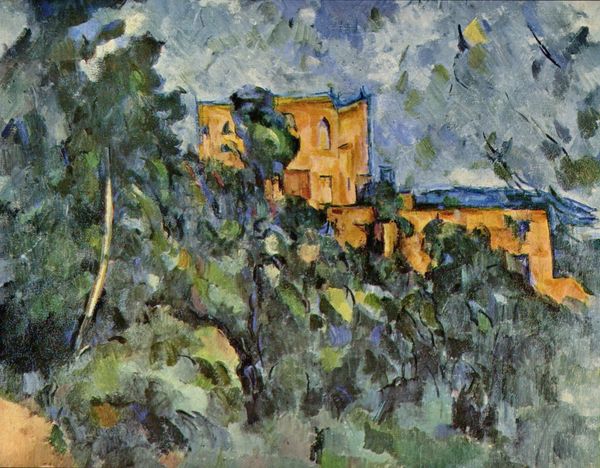
painting, oil-paint, impasto
#
painting
#
oil-paint
#
landscape
#
impressionist landscape
#
oil painting
#
impasto
#
geometric
#
post-impressionism
#
expressionist
Dimensions: 65 x 81 cm
Copyright: Public domain
Paul Cézanne made this painting of the Bibemus Quarry with oil on canvas, a traditional fine art material, but his approach couldn’t be more radical. The ochre rocks dominate the scene, rendered with thick, deliberate strokes that emphasize their weighty presence. You can almost feel the heat radiating from the stone. Cézanne wasn’t interested in replicating reality. Instead, he wanted to understand the underlying structure of what he saw and how the qualities of materials can show that. What’s interesting is that the quarry itself speaks to human effort. The landscape has been shaped by laborers extracting stone. Cézanne has mirrored this process through his own work, chiseling away at the canvas to expose the underlying forms. By engaging with the landscape in such a physical way, Cézanne challenged the traditional hierarchy between art and craft. He elevated the act of painting to a form of labor, transforming the canvas into a site of both representation and making.
Comments
No comments
Be the first to comment and join the conversation on the ultimate creative platform.
